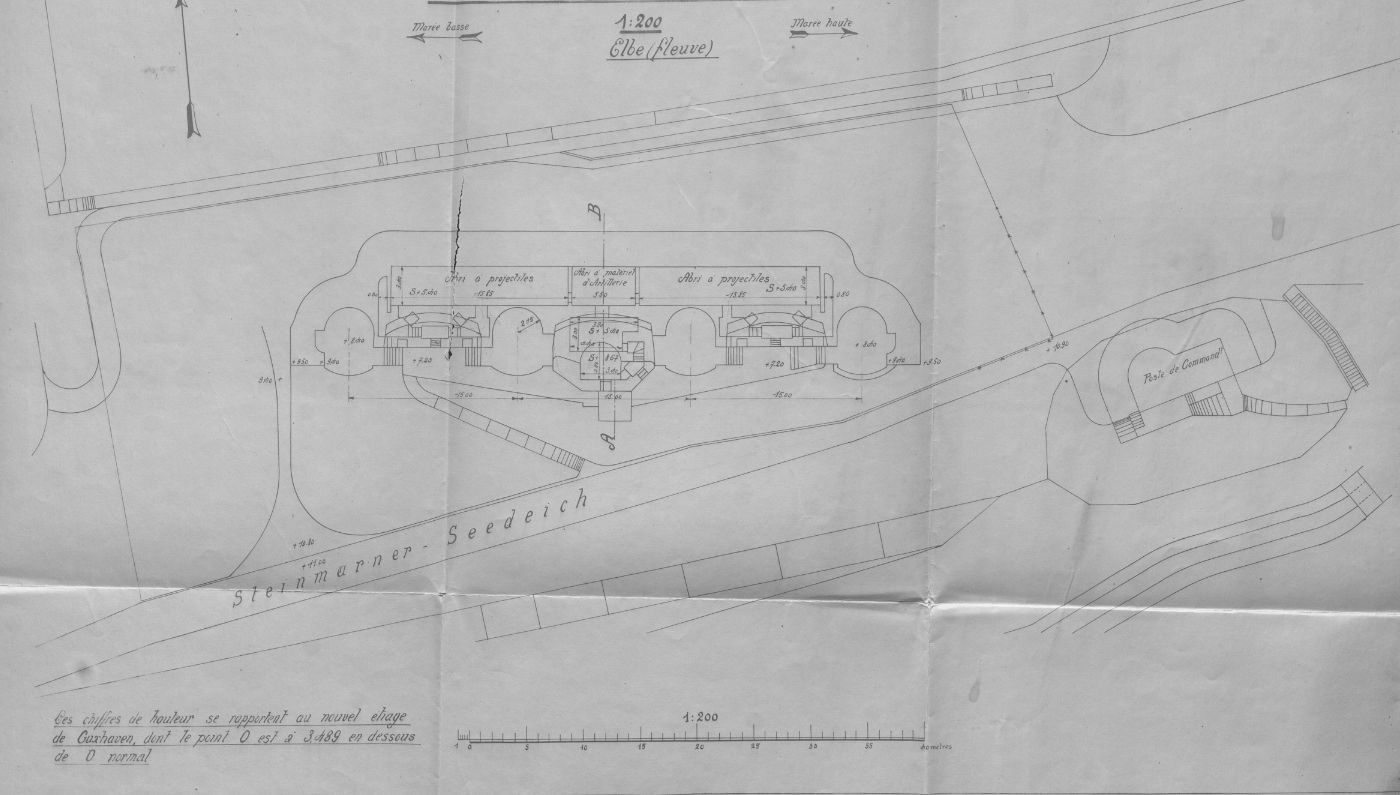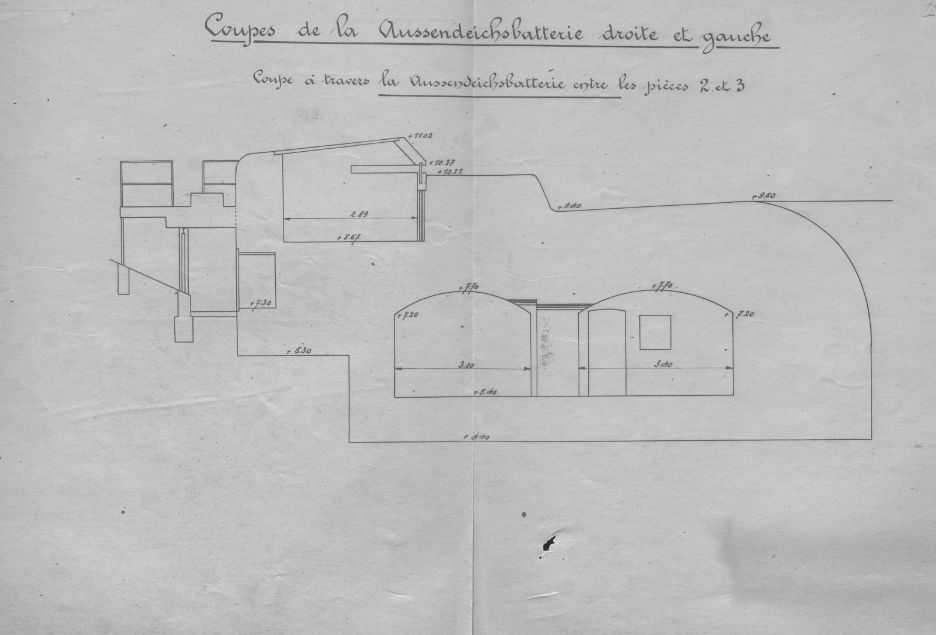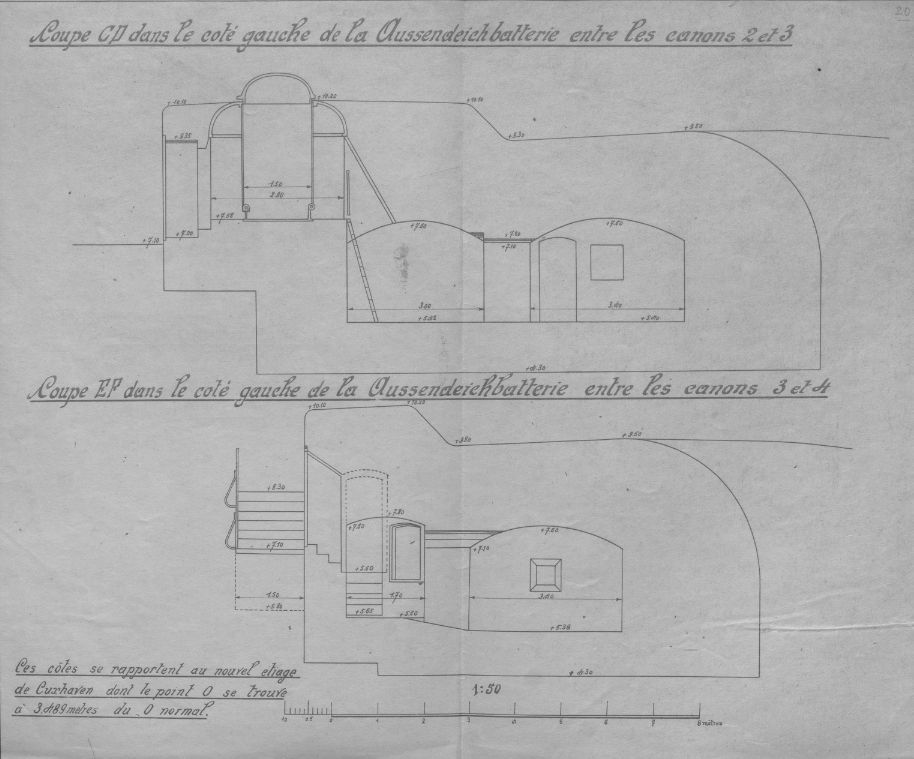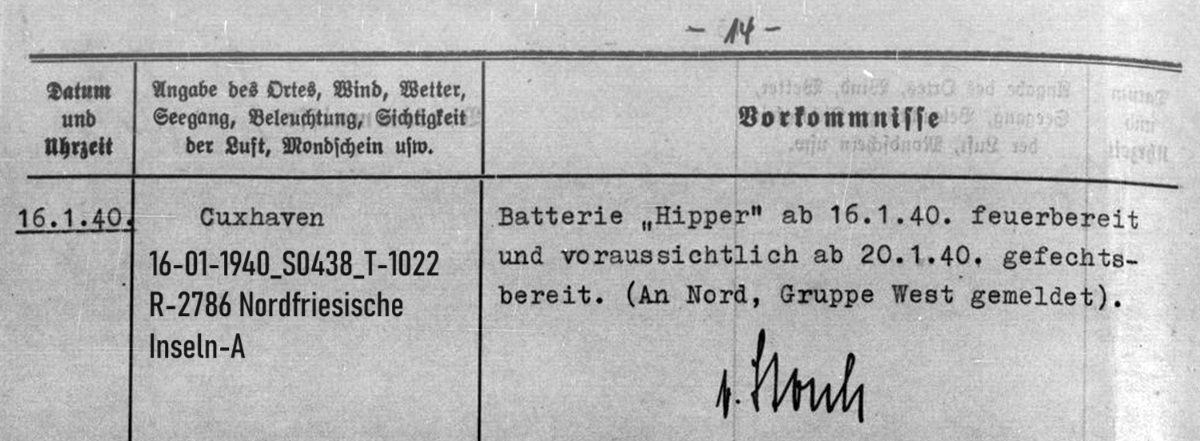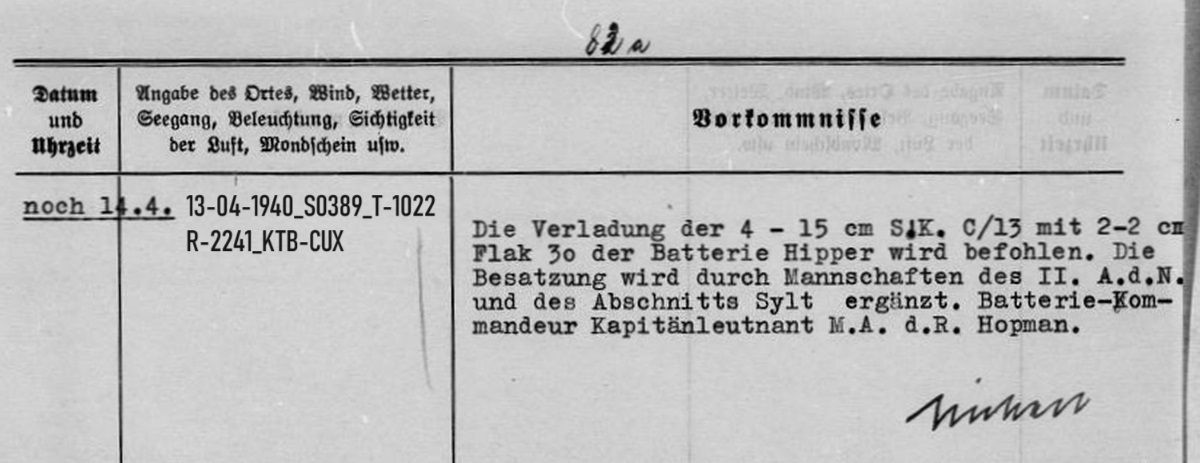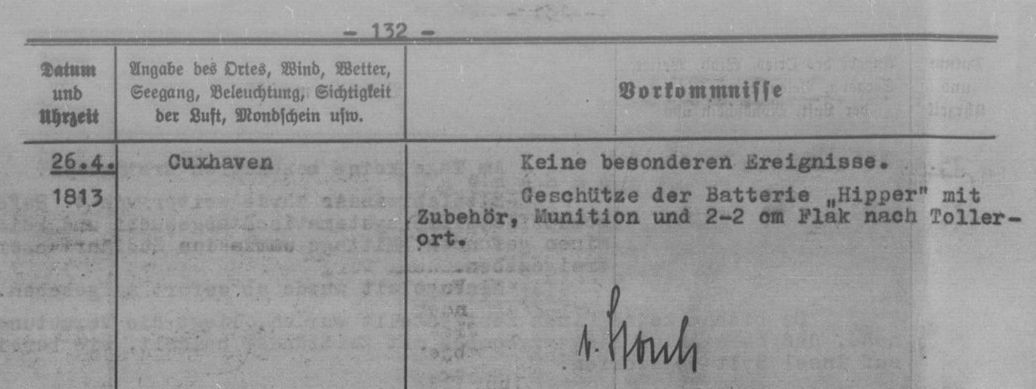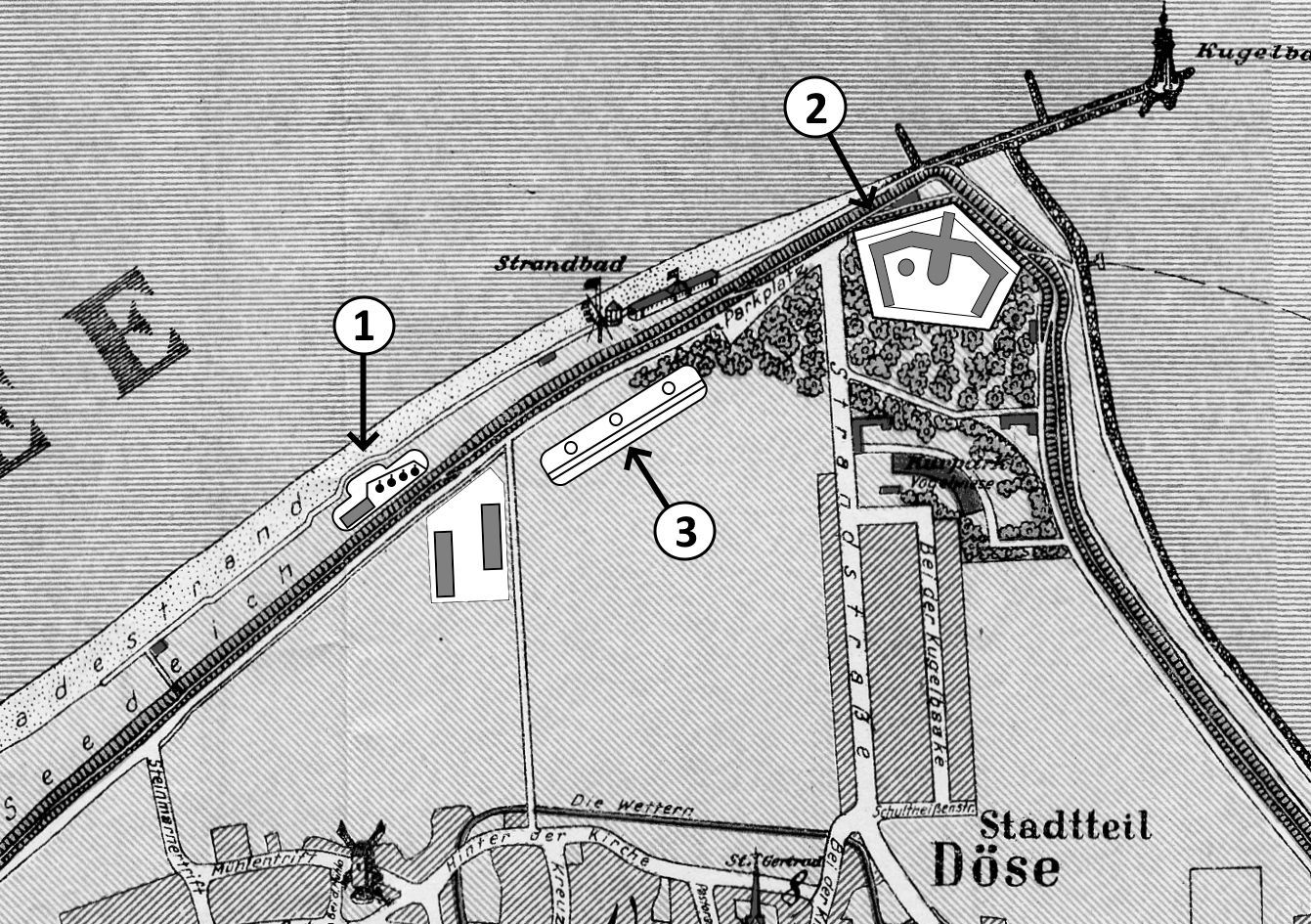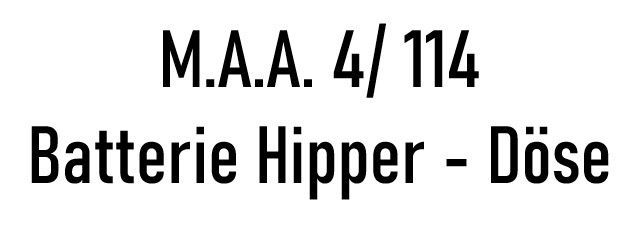
Stand 06.01.2024
Even before the start of the First World War, the then Imperial Navy built an artillery position on the north-western section of the beach at Döse between 1903 and 1904 to protect against enemy ships entering the mouth of the Elbe. It was called the "left external battery" and was located exactly where the "Döse Beach House" is today. The battery consisted of 4 15 cm SK/L 35 guns with a range of 12,600 meters, and there were 2 8 cm machine guns for close combat. The facility was fortified against fire with a protective belt made of steel and concrete.
Map extracts from a French dossier on the fortifications in Cuxhaven from 1927. These show top views and cross sections of the "left outer battery" on the Steinmarner Seedeich, today "Strandhaus Döse".
The "Hipper" naval cannon battery was already mentioned in 1938, and the site of the former "left external battery" was used as the location. The position was armed with 4 x 15 cm SK/L45 "Nathan" in MPLC 13 guns, in the middle of which was the combat control center. With the invasion of Denmark and Norway, however, the situation changed so that a military restructuring was necessary there too in connection with the construction of the Atlantic Wall. For this purpose, existing artillery and anti-aircraft batteries had to be relocated from the Reich to the Scandinavian coast in order to build up protection against invasion attempts there too. This also affected the "Hipper" battery, whose entire armament and personnel were relocated to Tollerort (Hamburg) on April 26, 1940 and then to Frederikshavn (Denmark). The unit of the same name remained there under the command of MAA 509 from June 14, 1940 to June 26, 1940, until it was subsequently disbanded and had to move to the Atlantic Wall on the French Channel coast. During this period, the position on the Steinmarner Seedeich was apparently completely evacuated. In contrast to the other locations, there was no immediate danger of an Allied invasion here. By the end of the Second World War, however, the position had been re-equipped with guns and the personnel had been increased accordingly. The armament is given as 4 x 15 cm/45 (5.9") Ubts Tbts L/45. Unfortunately, it is not stated exactly when the battery was rearmed. However, it probably happened in 1943 at the latest. On the inner side of the dike, an adjacent barracks camp was built for the battery crew. After the end of the war, this was used as living space for refugees from the eastern territories. After the end of the war, the entire complex, as well as others, was blown up and rendered unusable on the orders of the Allies as part of the demilitarization. In 1955, the "Strandhaus Döse" was built in its place, which still exists today.
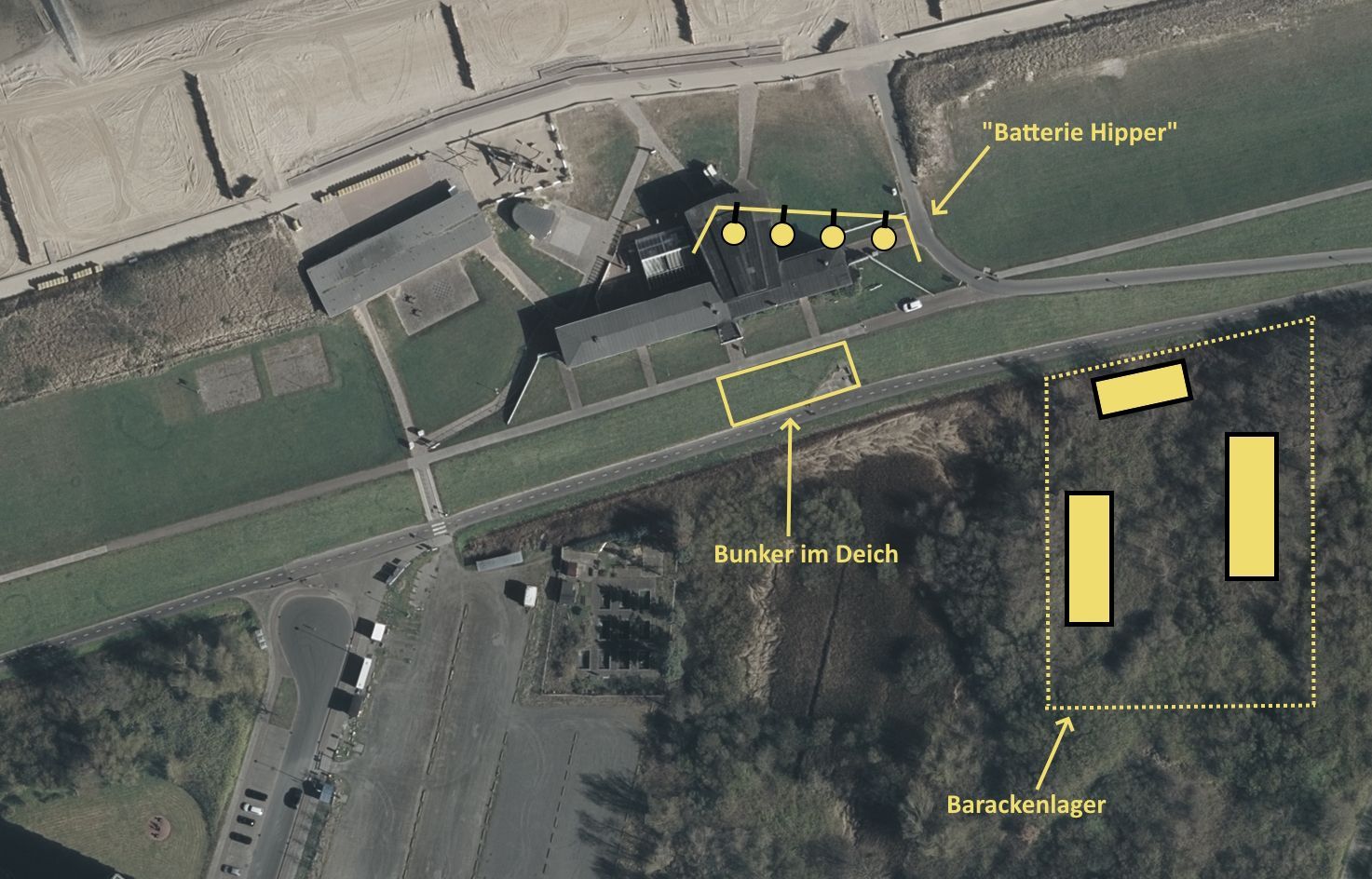
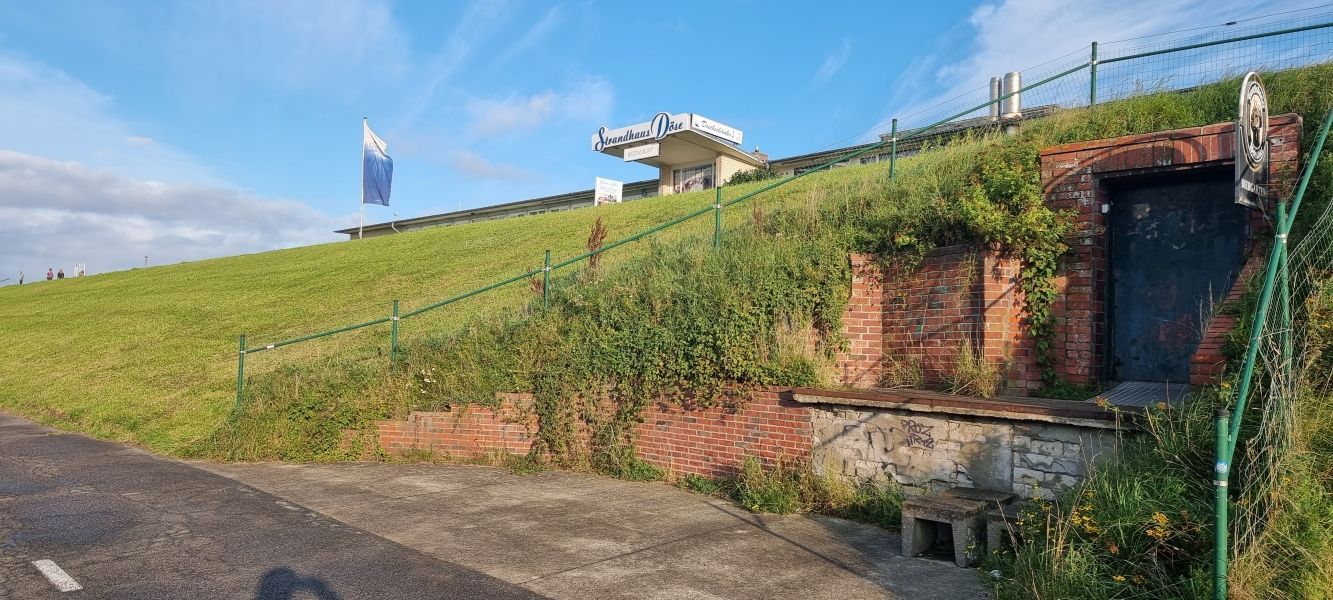
A remnant of the "left external battery" and later the "Hipper" naval cannon battery in the Steinmarn sea dike. It is a connecting corridor that is now used for deliveries to the "Döse beach house". Until the 1980s it belonged to a bunker that extended about 20 - 30 meters further to the left. However, it had to be removed due to dike protection.
Sources: MB, Gerd Wildfang, Joachim Patberg




